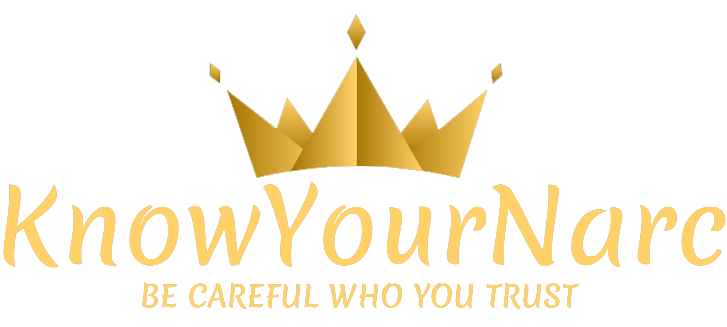In the complex web of human relationships, certain patterns of interaction can subtly undermine trust and fuel conflict. One such pattern is triangulation-a psychological dynamic that, while often overlooked, plays a significant role in toxic relationships. Understanding triangulation is essential for anyone seeking to recognize unhealthy behaviors, set boundaries, and promote clear, direct communication. In this article, we will break down the concept of triangulation, explore how it manifests in various settings, and shed light on why addressing it is crucial for fostering healthier, more authentic connections.
Table of Contents
- Understanding the Psychological Mechanisms Behind Triangulation
- Identifying Signs of Toxic Triangulation in Personal and Professional Relationships
- The Impact of Triangulation on Emotional Wellbeing and Communication
- Effective Strategies to Address and Prevent Toxic Triangulation in Your Life
- Future Outlook
Understanding the Psychological Mechanisms Behind Triangulation
At its core, triangulation functions as a psychological defense mechanism where an individual manipulates communication between two parties to maintain control and avoid direct confrontation. This dynamic often arises from underlying feelings of insecurity or fear of abandonment, prompting the triangulator to draw a third person into the conflict as a way to diffuse personal tension or shift blame. This indirect interaction allows them to maintain a sense of power and emotional safety, but it simultaneously fosters confusion, mistrust, and division among those involved.
Several psychological processes fuel triangulation, including:
- Projection: Unwanted personal feelings are projected onto others to avoid facing internal conflicts.
- Manipulation: Controlling others’ perceptions to keep oneself in an advantageous position.
- Emotional triangling: Creating alliances through shared emotional experiences to strengthen relational out-groups.
Recognizing these mechanisms is crucial not only in identifying toxic patterns but also in fostering healthier communication channels that promote directness and emotional authenticity.
Identifying Signs of Toxic Triangulation in Personal and Professional Relationships
Recognizing the subtle markers of toxic triangulation is crucial for maintaining healthy dynamics. Often, you might notice a recurring pattern where communication feels indirect or manipulated. One party may consistently involve a third individual to validate their feelings or to avoid addressing issues head-on, which creates confusion and division. Signs include persistent gossip, unequal sharing of information, and a feeling that no one is truly hearing your perspective. You might also observe that conflicts rarely get resolved but instead cycle through rounds of blame, with a third person acting as an unintended pawn in the emotional tug-of-war.
In both personal and professional settings, toxic triangulation breeds mistrust and isolation. You could find yourself caught between conflicting messages or being used as a messenger without your consent. Watch for situations where:
- People share selective information to sway opinions or gain advantage.
- Direct communication breaks down and problems are discussed behind backs.
- One individual consistently positions themselves as a mediator in a way that sows unrest rather than resolution.
Becoming aware of these patterns empowers you to set boundaries and foster authentic dialogue that can dismantle harmful cycles.
The Impact of Triangulation on Emotional Wellbeing and Communication
When individuals become entangled in triangulation, the emotional toll can be profound and far-reaching. This toxic dynamic often breeds feelings of confusion, anxiety, and mistrust among everyone involved. Rather than addressing issues directly, people find themselves caught in a web of indirect communication that erodes personal boundaries and fuels resentment. Over time, the emotional wellbeing of those trapped in triangulation deteriorates, characterized by heightened stress and an overwhelming sense of isolation. The constant back-and-forth and manipulation can lead to chronic emotional fatigue and severely impact mental health.
Communication suffers immensely under the weight of triangulation’s influence. Instead of fostering healthy dialogue, this dynamic creates an environment where authenticity is stifled and misunderstandings proliferate. Key issues remain unresolved as messages become distorted through the indirect channels, leaving all parties frustrated and disconnected. The cycle perpetuates a toxic atmosphere where:
- Honest expression is avoided in favor of secrecy or manipulation
- Trust erodes, making collaboration and conflict resolution nearly impossible
- Emotions are weaponized, further deepening relational divides
Recognizing this pattern is crucial to breaking free and rebuilding emotionally healthy and transparent communication.
Effective Strategies to Address and Prevent Toxic Triangulation in Your Life
Confronting toxic triangulation effectively begins with establishing clear, direct communication lines between all parties involved. When one avoids playing the intermediary role, the chances of misunderstandings and manipulation drastically decrease. Encourage an environment where individuals can express concerns and needs openly without relying on third parties. Implementing regular check-ins, where feelings and perspectives are shared candidly, also fosters transparency and reduces the impulse to ‘triangulate’. Remember, strengthening one-on-one relationships is the foundation of dissolving toxic triangles.
Prevention is equally critical and involves raising awareness about how these dynamics operate. Develop personal boundaries sharply and recognize when you might be drawn unwittingly into these patterns. Key practices include:
- Identifying manipulative behavior early and addressing it assertively.
- Promoting accountability by encouraging direct conflict resolution.
- Seeking external support like counseling or mediation if patterns persist.
By implementing these strategies consistently, you can create healthier interactions and reduce the harmful effects of triangulation in both personal and professional relationships.
Future Outlook
In understanding triangulation, we shed light on a toxic dynamic that often undermines relationships and personal well-being. Recognizing these patterns is the first crucial step toward breaking free from manipulation and fostering healthier communication. While these dynamics can be challenging to navigate, awareness empowers us to set boundaries, seek clarity, and reclaim control over our interactions. By confronting triangulation head-on, we create space for more authentic and respectful connections-both with others and ourselves.

